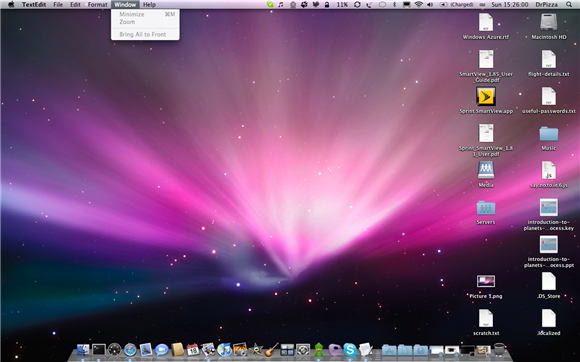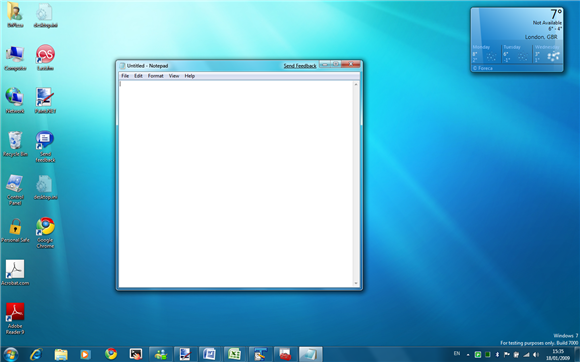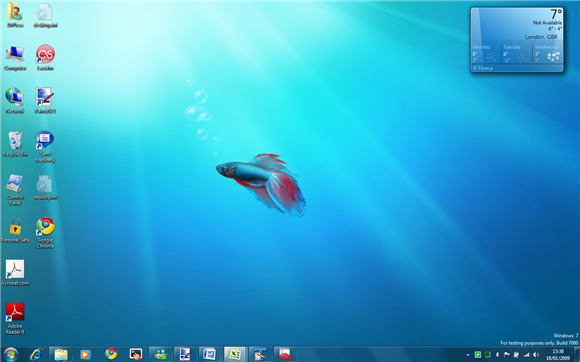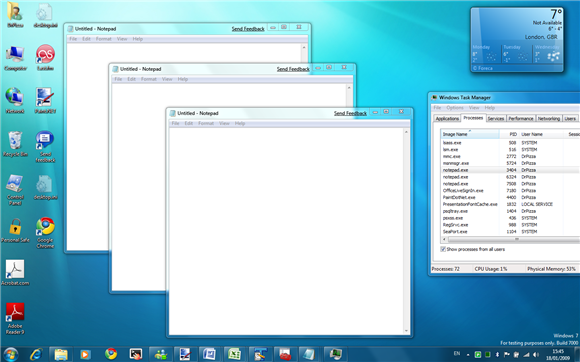
Start your copiers?
Windows 7's new Taskbar has drawn many comparisons to Mac OS X's Dock, and many of them negative, with the overwhelming concern that Windows is becoming too Mac-like. Even among Mac users, the new Taskbar is unlikely to be universally appreciated, as many feel that the Dock is deeply flawed.
On a superficial level, the similarity is obvious; both Dock and Taskbar are rows of large icons used for application launching and switching. Closer examination, however, reveals that there's a long way to go before anyone should worry that Microsoft is slavishly following Apple. The Windows UI isn't turning into the Mac OS X UI—not yet, at least.
UI Paradigms
In order to fully appreciate the differences between the Taskbar and Dock, we first have to understand the basic premises on which Windows and OS X are built. Much of the material in this section will be remedial for the majority of readers, but it pays to cover it anyway, since it lays an important foundation for the rest of the article.
The fundamental distinction between OS X and Windows is that, in general, windows on Mac OS X represent documents; on Windows, they represent applications. This conceptual difference motivates many of the UI features of both OSes, and understanding it is key to understanding the two operating systems.
In practice, the most obvious repercussion of this difference is that on Mac OS X, closing the last window of an application does not exit the application itself. After all, each window is merely a document, and just because there are no documents open does not mean that the application should close; perhaps the next action will be to create a new document or open an existing one. In Windows, on the other hand, closing the last window generally closes the application completely. Because the application is the window, closing the window naturally closes the application with it.
So, for example, in this screenshot we see TextEdit is running with a single document window open. Closing that document doesn't close TextEdit; it's still running, just without any windows (that is, documents) open.

TextEdit

TextEdit has no windows, but is running all the same
In Windows, by contrast, closing the last document window closes the application:

Notepad

With no windows, Notepad has nowhere to run, so it quits—hence the Taskbar no longer has a Notepad icon.
The Mac's window-per-document model naturally leads all Mac software to be able to load and display multiple documents simultaneously; to have multiple documents, just create multiple windows.

Multiple documents just mean multiple windows; no problem
The situation isn't so clear-cut on Windows. Because each window represents an entire application, what should an application do if the user wants to load two documents simultaneously? The lack of a single good answer means that Windows applications exhibit a variety of behaviors. The simplest policy is that used by Notepad; Notepad simply can't open multiple documents, and so to get multiple documents you just run multiple copies of the application.

Multiple Notepad documents means multiple Notepad applications
While this works reasonably well for small, lightweight applications like Notepad, it's not so satisfactory for larger applications, and as a result we see a variety of other behaviors in other Windows programs.
reader comments
0